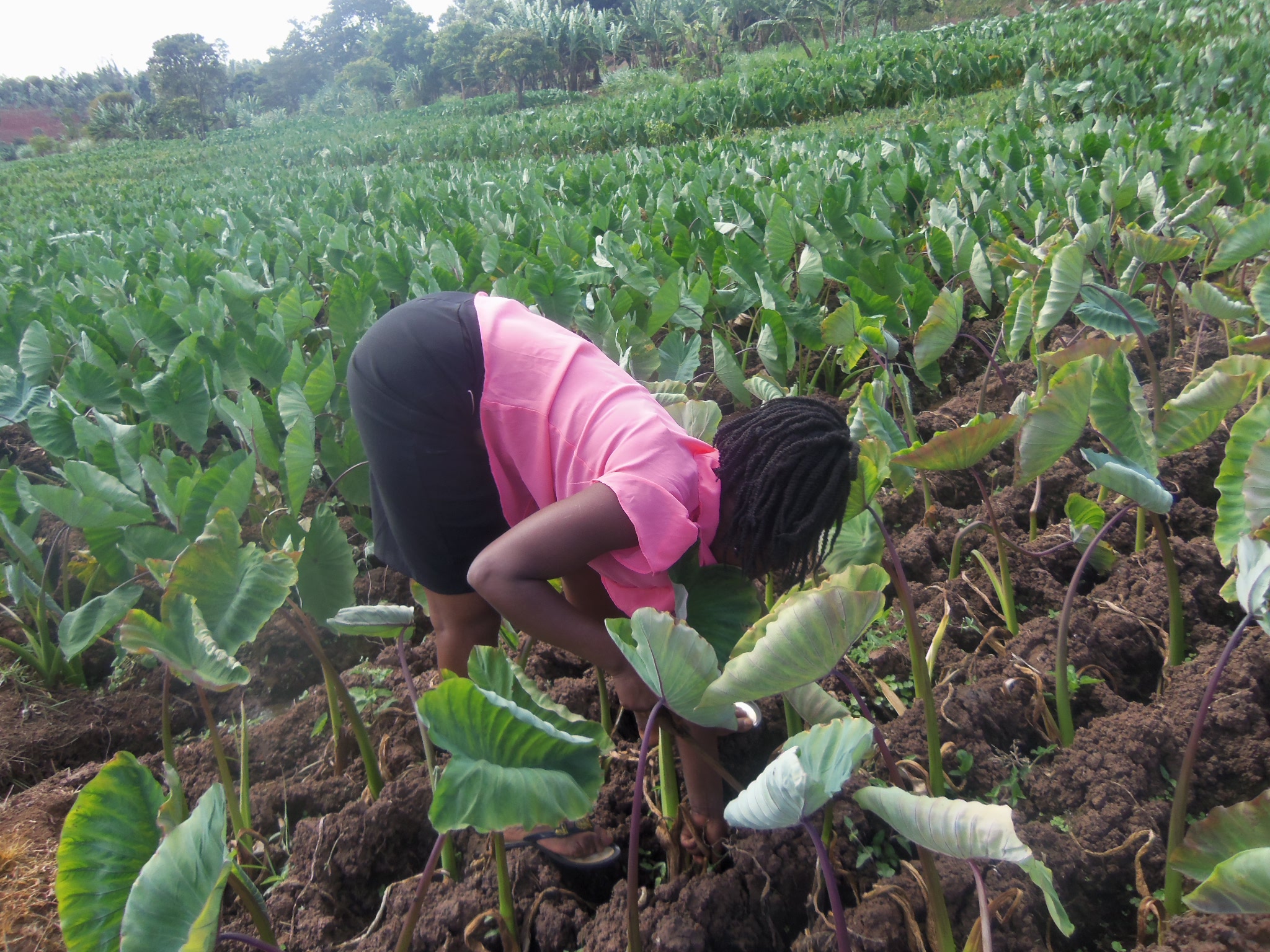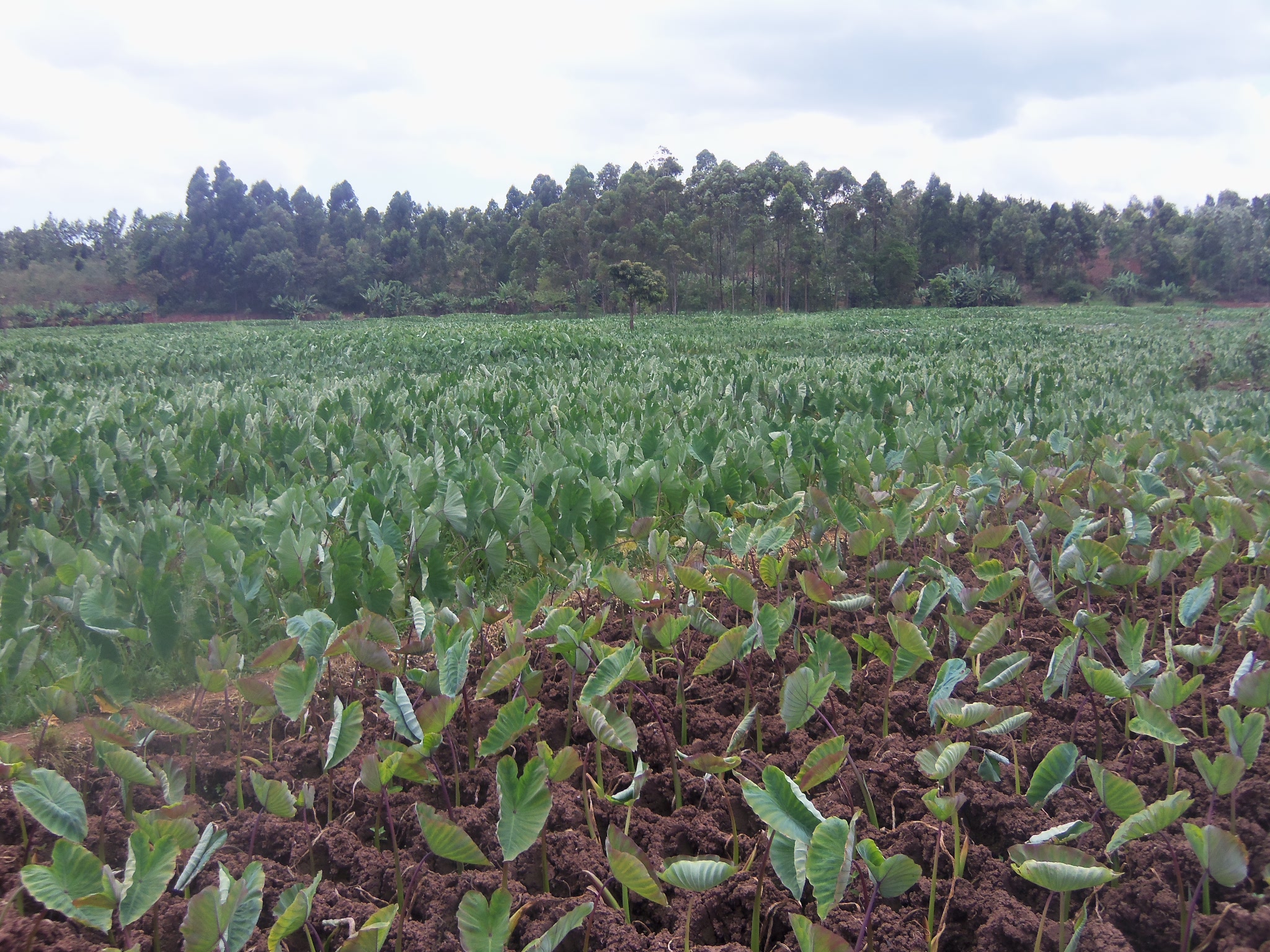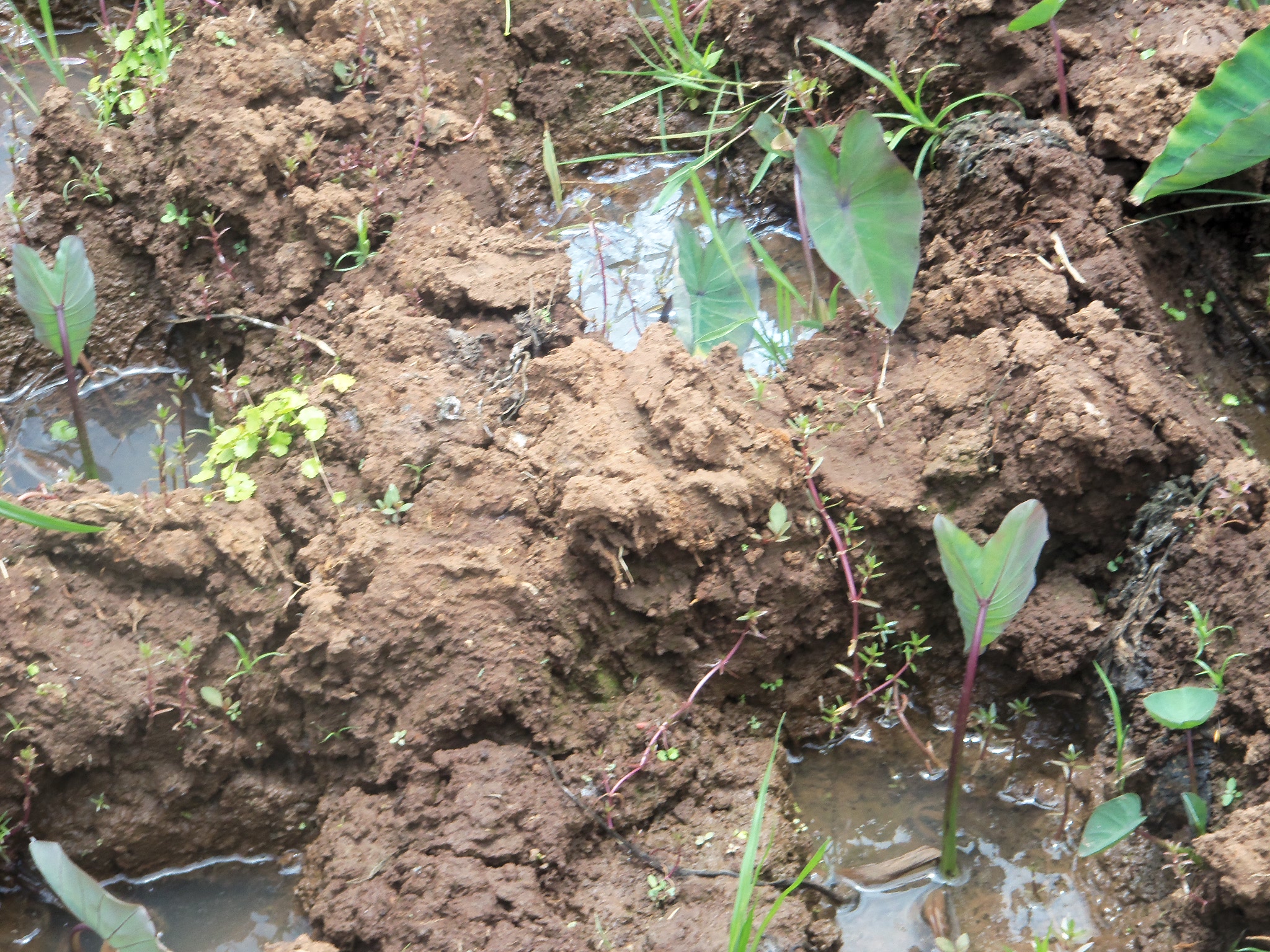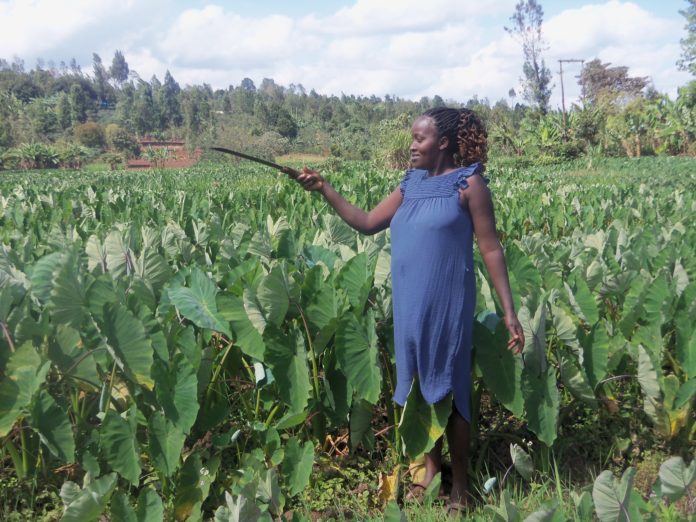By Sharon Kiburi
Kirinyaga County, Kenya: For a long time, arrowroots in Kiaragana village located on the slopes of Mt. Kenya were initially planted as a staple food, as the yields progressed, most women began to see the potential of making an income from the large clay pieces of land.
In traditional home settings, cash crops farm items such as coffee, maize did well in the wet clay soil land. Years later, the locals’ clay land piece they call ‘Kinji’ has transformed from grass growing for cattle feeding to acres of arrowroots farms.

Resting under a tree in a well-carpeted grass, we meet the slim, enthusiastically smiling Susan Nyawira. She was warm and welcoming, all fired up to tell us about her journey that led to her economic transformation.
“I am naturally an ambitious individual, however, gathering enough funds to buy a piece of land property from the profit of growing and selling arrowroots was such a surreal moment for me,” said Susan Nyawira, an arrowroot farmer at Kiaragana village in Kirinyaga county in Kenya.
She has been in the business of farming arrowroots for more than ten years. She leads us down to the farm with wet clay soil sandwitched by streams of muddy water.
“I have seen the prices of arrowroots fluctuate over the years, I was patient and stuck it through mainly because the farming process does not require many resources to plant and maintain,” Said Nyawira. Further, Nyawira added that when you don’t spend much on farm inputs but make some profit, it is good business at the end of the day.
The land is divided into small portions. It takes five to six months for the arrowroots to mature. “Depending on the planting and previous harvesting dates, each portion matures at different times of the year, which is good because that means one can count on having almost certain income spread throughout the year,” said Nyawira.

Nyawira harvests twenty-five to thirty-five sacks of arrowroots per portion per each harvest. “I get between 85,000 to 120,000 in each harvested crop. When you have many portions of the arrowroots in the land, you can have rest quite easily since income productivity is almost inevitable,” said Nyawira.
Beyond land investment, profits from the venture have seen Nyawira diversify her income sources by venturing into dairy farming and growing bananas “I was able to buy a motorbike and tuk-tuk, which aids in the transportation of arrowroots, dairy milk, and bananas from the farm to the buyers,” says Nyawira.
Moreover, Nyawira says, arrowroots typically grow in wet clay soil, but they can grow in the ordinary soil if water is provided through an irrigation system. She encourages women who do not have access to land with clay soil but are determined to have their own income to plant even on the ordinary soil but be diligent in watering them because the profit and benefit could be life transformative.
In the expansive green arrowroots leaves farm, we spot a lady weeding for her arrowroots at a neighboring land. As we approached her, she looked up with a broad smile extending greetings. She initially assumed we were new buyers in town, but she was excited to tell us her journey with arrowroots farming.
“I have paid school fees and other household expenses from the profits of arrowroots”, says Philomena Mueni Muchiri, who also started farming arrowroots ten years ago.
“The farm gives me around fifteen to twenty sacks of arrowroots every harvest season; sales yield a profit of about 45,000 to a 75,000 Kenya shillings,” says Mueni.
In addition, Mueni says farming arrowroots has enabled her to grow herself financially and expand into other agriculture areas like dairy farming and macadamia nuts growing.
“As a first-hand witness to the benefits growing arrowroots has brought in adding to our family income. I would encourage those who have access to clay soil land to plant arrowroots so they can grow their financial income,” says Mueni.

The ladies sell their arrowroots to intermediaries (brokers) who visit the farms or send their products to markets in the nearing Embu town, Kitui, and even Nairobi at Muthurua market when they have the transport and huge harvests.
Agricultural experts insight on agroecology
“Farmers typically use organic fertilizers instead of mineral fertilizers. They also apply mulch to the crop hence reducing tillage times. They do not apply pesticides to arrowroots, thus encouraging the diversity of natural enemies and pollinations in the food system,” said Francis Murage, an Agricultural Resource Management expert from the University of Embu.
Murage says this type of farming is known as agroecology. He says agroecology involves the application of ecological and social approaches to food systems in an integrated approach. It focuses on the interaction between humans, animals, plants, and the environment.
It involves farming practices that aim to maximize crop production while minimizing external inputs and reducing environmental degradation and loss of biodiversity. Some agroecology practices include green manure, minimum tillage, cover crops, biological pest control, conservation tillage, crop rotation, and crop-livestock integration.
“Some of the benefits of agroecology practices are improving crop productivity and resilience of agroecosystems, minimizing reliance on external inputs, conserve biodiversity and natural resources like soil and water. It also enhances positive ecological interactions and improves the diversity of the pollinators and natural enemies of pests,” Murage adds.
“Agroecology practices foster good health since they involve minimal use of toxic pesticides, reducing the incidence of pesticide poisonings and Pesticide-related diseases. In addition, crops grown using agroecology practices are nutritious, this improves smallholder farmers’ general health and nutrition,” explains Murage.
“The adoption of agroecology as a method of farming is cost-effective. The farmers can maximize their profit due to increased crop yields and minimal application of external inputs. In addition, farmers use locally available materials to replenish their soil nutrients, hence reducing production Costs. Fertilizers and pesticides, which are costly, are used minimally hence reducing production costs significantly,” elaborates Murage.
Murage says agroecology is sustainable to produce enough yield for food security in Kenya and other African countries.
When well embraced and practiced, agroecology can aid in meeting the demand for the increasing Kenyan population, especially with the changing climate.















Awesome read
Comments are closed.